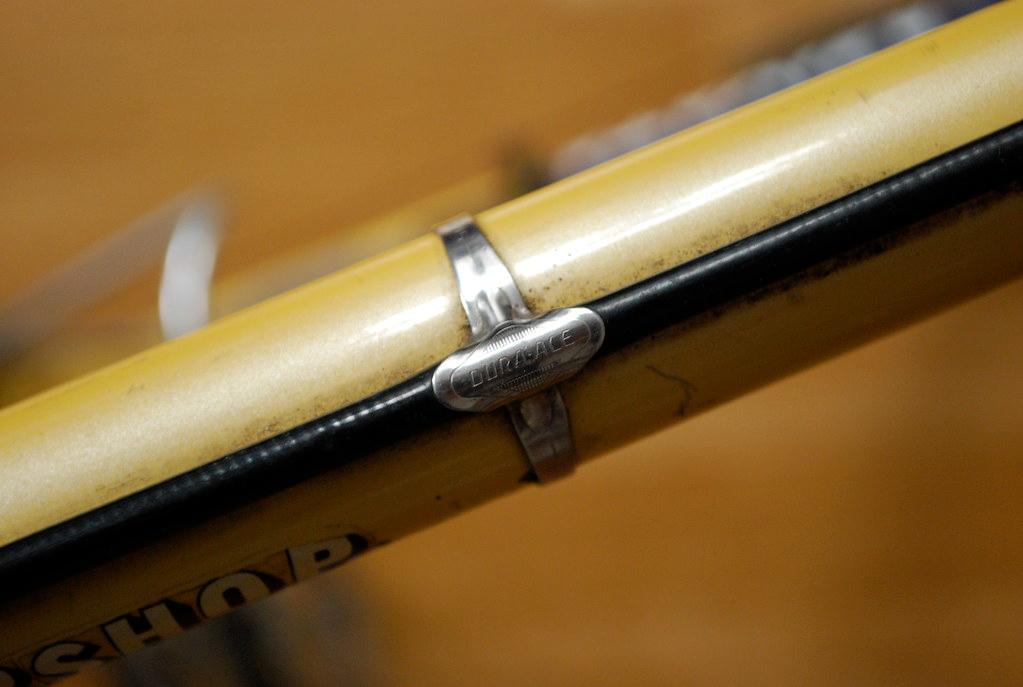For the rear derailleur, you may be able to run a full length of housing all the way, regardless of if the cable is routed on top of or on bottom of the bottom bracket. That would be the least expensive solution, and is up to you.
For the front derailleur, you will probably need a cable stop somewhere. The item you linked has some additional options, importantly an option for a single stop.
The black comes in pairs or singles, the silver comes in singles only. You could definitely stack two of these singles and rotate them to get proper alignment of both cables if you don't run a full length of housing like mentioned above. The double one you linked would MAYBE work if your cables get routed over the bottom bracket (time period of downtube shifters) if you put the two stops on the top, and down low more toward the bottom bracket as long as aren't binding the cables much. If installed up higher and on the bottom they would probably "wrap" as you suspected back to the top, likely rubbing the frame. If your cables go underneath the BB through a plastic corral (the age of modern shifters), that positioning would be ideal.
Add in a pair of inline barrel adjusters between any shifter and housing stop to allow for easy adjustment.
In addition, I would recommend skipping the stem shifters altogether. Go for some "brifters" or brake levers with intergrated shift levers. Microshift makes some decent aftermarket sets if you want new ones, or again check a LBS or facebook swap group. On an older bike they would need to be (2,3)x(5,6,7) or (2,3)x(8,9,10) depending on your drivetrain. If the rear gears are a freewheel, you could easily upgrade to a 7 speed in the back. Anything with a cassette is probably 8 speed or higher already, and probably irrelevant as far as having downtube shifters anyway, but could be upgraded to 10 speed cassette if you're buying new brifters. This would add the cost of a new driver and chain on top of the new shifters. If you want to go up from 7 or less gears (freewheel) you will need to purchase a new cassette based wheel as well. This might be the best upgrade path if your current rear wheel is less than ideal: bent, missing spokes, etc., or you're a clydesdale rider, or you plan on doing any loaded touring in the future and require a wheel with more spokes.
These costs would add up of course. It would be up to you to determine the sentimental and actual value of the bike and whether $200+ in upgrades would be worth it. If you can avoid paying full retail it's probably a worthwhile upgrade. Otherwise keep your money in your pocket and throw on those stem shifters!!







